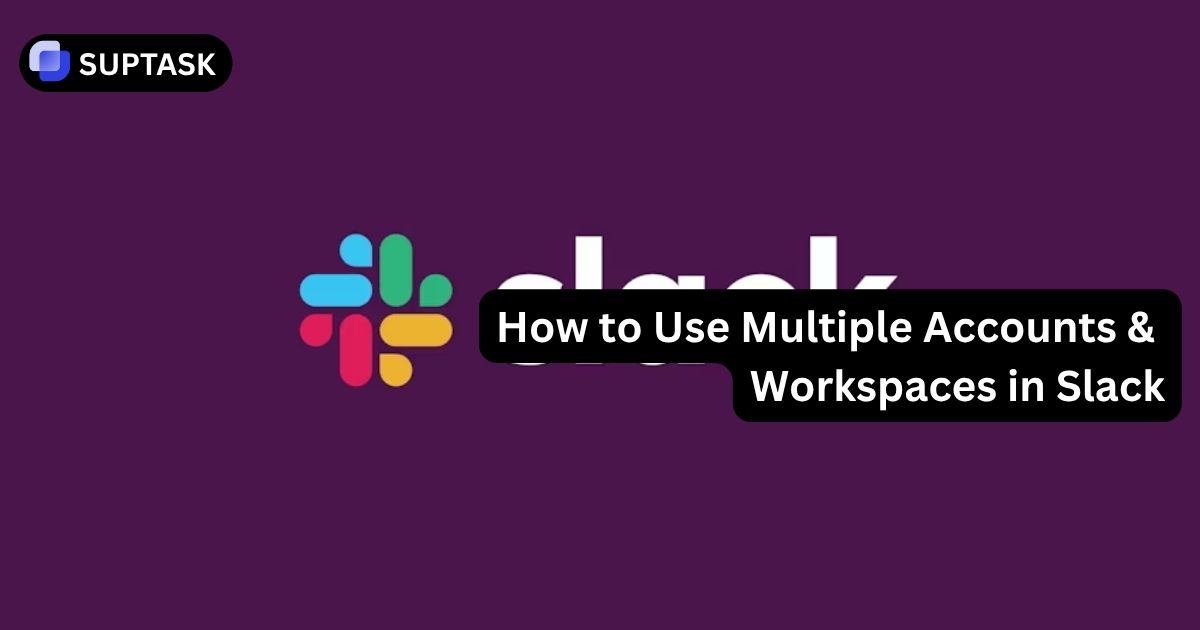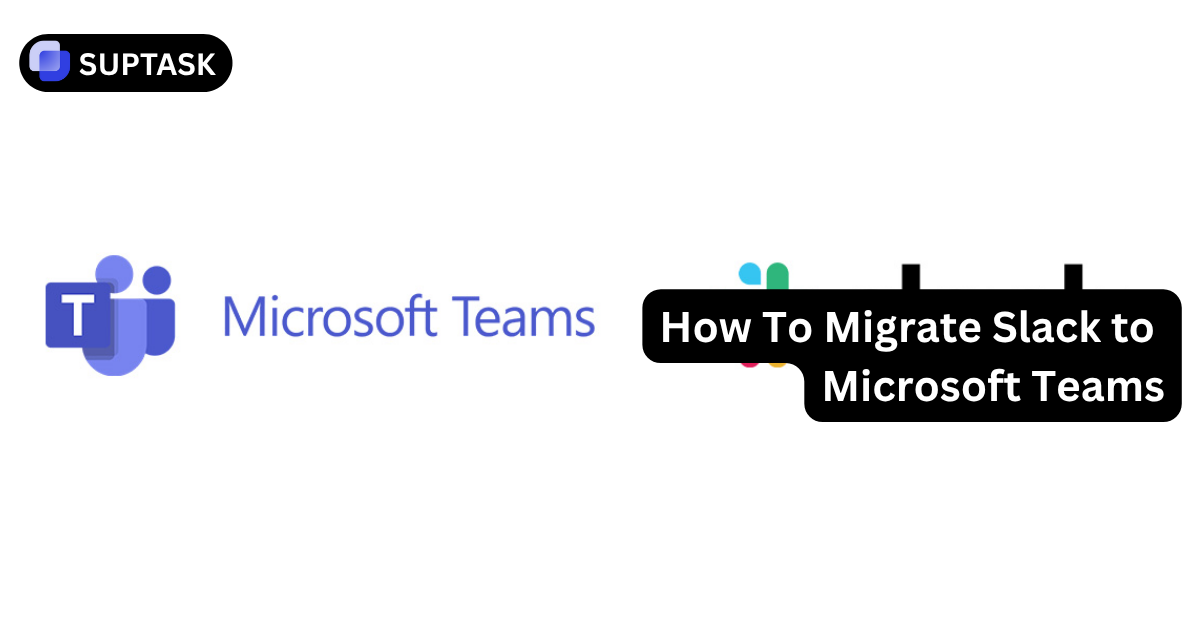Imagine juggling a company workspace, two client workspaces, and a community group. A priority ping lands in one place while an announcement drops in another. You need fast switching, separate identities, and a notification plan that protects focus. This guide shows how to use multiple accounts and workspaces in Slack with speed and safety.
How Slack Connections Work
Slack connections let you message people outside your workspace without switching accounts. When you connect, Slack creates a direct bridge between your profile and the other person’s, allowing you to chat in a dedicated DM channel. These connections don’t require both users to share a workspace, but they do rely on each person’s Slack account identity.
You can manage or remove these links anytime under Connections in your Slack settings.
Slack Account And Workspace Model Explained
A workspace is the container for a team or company. An account is your identity inside one workspace. You create a separate account for every workspace you join, even if you reuse the same email. The Slack app is the session manager that holds all those sign ins. Plan your profile, notifications, and apps per workspace. For structured team work inside Slack, see this primer on project management in Slack.
Workspace
A separate environment with its own members, channels, and apps. Think one company or one project per workspace.
Account
A unique identity per workspace. Profiles, roles, and preferences are not shared across workspaces.
Slack App
Your control center to sign in to many workspaces, switch quickly, open multiple windows, and tune alerts.
Add And Switch Between Workspaces On Desktop
Use the workspace switcher, keyboard shortcuts, and separate windows for parallel work.
Add An Existing Workspace
Click the plus icon in the left workspace bar → Add a workspace → Sign in to another workspace. Enter your email, confirm the code, then pick the workspace to add.
Accept An Invitation
Open the email invite and click Join Now. After you create the workspace-specific account, Slack adds it to your sidebar automatically.
Create A New Workspace
Use the plus icon → Create a new workspace. Name it, set the first channel, and it appears in your switcher.
Power Switching
Jump: Cmd or Ctrl + number jumps to that workspace. Cycle: Cmd or Ctrl + Shift + ] moves to the next one. Drag icons to reorder by priority.
Open Separate Windows
Hold Cmd or Ctrl and click a channel or DM to open it in a new window. Keep the top channel in each workspace visible on a second monitor.
Add And Switch Between Workspaces On Mobile
Mobile is ideal for urgent work only. Add what you need and keep the rest on desktop.
Add A Workspace
Open the app → open the workspace list → tap Add a Workspace. Sign in, join from pending invites, or create a new workspace. You can also scan the QR code from desktop to sign in faster.
Switch Quickly
iOS supports a three finger swipe left or right to jump workspaces. On Android, open the workspace picker from the top bar to switch.
Manage Multiple Email Identities In One App
You can sign in to workspaces tied to different emails. The app keeps each session separate.
Add A Workspace With A Different Email
Use the same Sign in to another workspace flow. Enter the other email, confirm, and the workspace is added beside the rest.
Security And MDM Warning
If any employer enforces device management on your phone or laptop, separate devices are the safest choice. Do not aggregate competing employers in one managed device profile.
Duplicate Accounts From SSO
If an alias created a second account, a workspace admin must fix it. The usual remedy is to deactivate the duplicate and reassign the correct email to your main account.
Use Slack Connect Instead Of Joining More Workspaces
For client work and vendor projects, prefer shared channels through Slack Connect. You stay in your home workspace while collaborating in a common channel with the partner. It reduces context switching, preserves ownership for both sides, and keeps your notification model simple.
| Option | User Experience | Access Scope | Data Ownership | When To Use |
|---|---|---|---|---|
| Slack Connect Channel | Excellent. Work in your own workspace. | Only shared channel and related DMs. | Each org keeps a copy. | Ongoing client or partner collaboration. |
| Guest Account | Medium. You log into their workspace. | Only invited channels. | Host owns data. | Short term contractors and interns. |
| Full Workspace Access | Low. Heavy context switching. | All public channels and apps. | Host owns data. | Employees of that organization. |
Notification Strategy For Multiple Workspaces
Define what can interrupt you by workspace and by device. Set defaults to quiet, then opt in to the few things that truly matter.
Primary Workspace Rules
Set Direct messages, mentions, and keywords. For the two or three mission critical channels, override channel settings to Every new message.
Secondary Workspaces
Set the workspace default to Nothing or DMs and mentions. Add keywords for clients and codenames to still get essential alerts. Use slash commands like /dnd and /mute to switch modes quickly.
Three Tier Filtering
Desktop: Signed in to all workspaces. Mobile: Only your main workspace and one urgent client. Email: Digest for low priority workspaces when you are away.
Is Accepting Every Slack Connection Wise?
Not really. Every connection request gives someone limited access to your profile and the ability to message you directly. Accepting too many can clutter your sidebar and expose you to spam or unwanted outreach.
Treat Slack connections like LinkedIn invites: verify who’s reaching out, check their company or mutual context, and only accept if there’s a clear reason to stay in touch.
Best Practices For Multi Workspace Productivity
Use structure to keep context switches intentional and brief.
Name And Order Deliberately
Reorder the switcher so your main job is first, then current client, then communities. Use recognizable icons for quick targeting.
Park A Status Window
Open one window per workspace and park each on a separate desktop space or monitor. Keep the highest signal channel visible at all times.
Run A Weekly Review
Sweep announcements, archive stale channels, and update your notification overrides. If you use Slack for tasks, this pairs well with a simple checklist.
Frequently Asked Questions About Multiple Accounts And Workspaces
Work Faster Across Multiple Slack Workspaces
Understand the model, add only what you need on mobile, and enforce a notification plan that matches your priorities.











